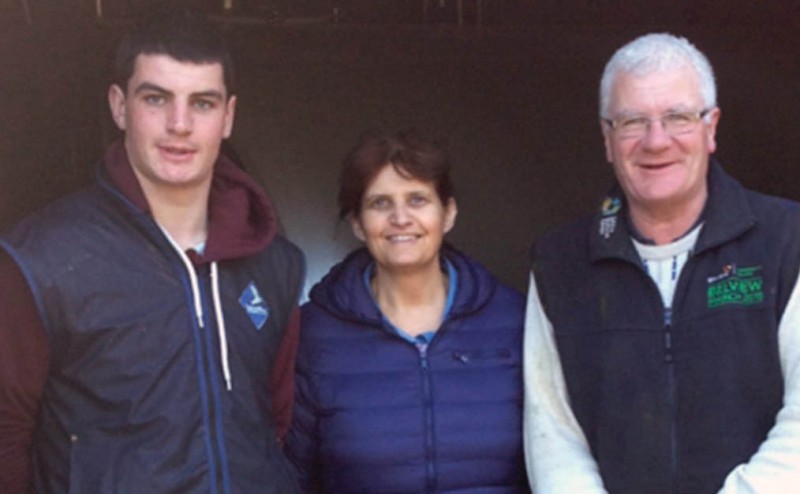
The future is bright for dairy farmers throughout the country. We caught up with Wexford-based milk producer Ger Lyons to get his take on the abolition of the EU milk quotas and what it means for his operation.
Dairy farmers work hard every day to bring fresh, great tasting and wholesome milk products to the kitchen table.
Active members of their communities, farm families take pride in feeding the people of Ireland while, at the same time, helping to maintain natural resources.
That means preserving the land where they live and work, protecting the air and water they share with neighbours, and providing the best care for their cows – the lifeblood of their business.
With 260 acres at Ballygullen, Craanford, Gorey, Co Wexford, Ger Lyons has been involved in dairy farming since 1976 and he gleans an enormous amount of satisfaction from his work which continues to be a great source of pride to him.
“My father Michael, who is still hail and hearty at the ripe old age of 90, operated a mixed enterprise and was involved in everything,” Ger, recalled in conversation with Irish Tractor & Agri, when asked to retrace his roots.
“But, at that time, I was very keen on the dairying end of things and to generate an income for two families, I developed the dairy up along the way. I had a bit of luck in the sense that when I started I had a substantial quota but it was a limiting factor at the same time due to the investment that was involved.
“But, we battled on and we have 200 cows in milking this year.”
Ger and the rest of the country’s 18,000 dairy farmers celebrated following the abolition of milk quotas earlier this year.
For the first time in 31 years, farmers don’t have a restriction placed on how much milk they can supply.
As a result, milk supply is expected to increase by 50 per cent by 2020, and the dairy herd to increase by about 300,000 cows.
It has also been estimated that at least 10,000 jobs could be generated on farm and in businesses working with farmers.
Simply put, it’s a great opportunity for dairy farmers to realise the potential of what is a great industry and Ger is keen to play his part.
“We’re delighted to have the freedom to be able to milk,” he enthused. “With the quotas you were always looking at the clock. It has been an awful noose around the neck of dairy farmers, especially those that had ambitions to expand, but we made the best of it.”
Ger sounded a note of caution, however. He said there were plenty of challenges ahead as prices would be volatile and there are question marks over whether or not the demand will be there for the rocketing supply.
“The cost of production is a major challenge and, despite what people might think, there’s no big fortune to be made in dairy at prices where they are today. There’s a lot of hype out there but I’d be concerned that it will be a slow burner to a point.
“Anyone who is in dairy for the long haul has made a substantial investment and the cost of production, the tight margins, is a limiting factor at present. Milk suppliers have to be rewarded for their time, effort and investment.”
Nevertheless, with the ongoing support of his wife Aileen and six children, Ger will continue to fight the good fight.
“Myself and Aileen were married 25 years ago and she has been very much part and parcel of the business since day one. We have six children and the second eldest Michael is a third year dairy business student in UCD, with one more year left before he graduates.
“We employ only family labour but I use contractors quite a lot. It all hands on deck at the minute!”
A lifelong member of Macra na Feirme and the IFA, networking plays an important part in Ger’s farming activities.
“I also served as chairman of both organisations. I thoroughly enjoyed my time in Macra when I was younger and then I moved on to the IFA. I’m also a member of the council of Glanbia and that helps keep me in touch with the market and up-to-date on all the different issues.
“It’s very beneficial because changes happen so quickly in farming and you need to keep up to speed with policy,” he concluded.
Taken from Irish Tractor & Agri magazine Vol 3 No 6, July 2015